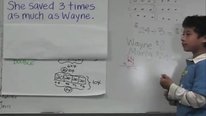- Ambika Silva
- Faculty
- StatPREP
- http://statprep.org/
- AMATYC, Mathematical Association of America, American Statistical Association ASA
- Megan Breit-Goodwin
- http://www.anokaramsey.edu/academics/departments-faculty/math/faculty-profiles/math-megan-breit-goodwin/
- Faculty Member
- StatPREP
- http://statprep.org/
- Daniel Kaplan
- Professor
- StatPREP
- http://statprep.org/
- Macalester College
- Thomas Kinzeler
- Mathematics Department Co-Chair
- StatPREP
- http://statprep.org/
- Kathryn Kozak
- Instructor
- StatPREP
- http://statprep.org/
- Jennifer Ward
- Associate Adjunct Faculty
- StatPREP
- http://statprep.org/
Public Discussion
Continue the discussion of this presentation on the Multiplex. Go to Multiplex












Ambika Silva
Faculty
Thank you for visiting the StatPREP video. Our project is focused on fostering the widespread use of data-centered methods and pedagogies in introductory statistics courses. StatPREP works directly with college-level instructors, both online and in community-based workshops, to develop the understanding and skills needed to work and teach with modern data. We are especially interested in discussion regarding teaching introductory statistics using real data, focusing on statistical concepts rather than computations, and how we can effectively use technology to help increase student understanding. However, please comment on any aspect of our project.
Jennifer Ward
Kristin Flaming
Kathryn Kozak
Jenna Carpenter
Megan Breit-Goodwin
Faculty Member
Welcome to the StatPREP conversation! I am a two-year college mathematics and statistics educator at Anoka-Ramsey CC in Minnesota. StatPREP has been one of the most important development experiences I have engaged in.
I knew that my teaching and my students' learning was not aligned with the charge set forth in the 2016 Guidelines for Assessment and Instruction in Statistics Education (GAISE) College Report. StatPREP helped me transform my practice and the experience of my students to better embrace the recommendations and goals in the GAISE report. Changing practice is HARD WORK! Having a supportive community of educators around me helped me take the first steps in changing my practice.
I look forward to hearing from you. I'd like to know how Introductory Statistics connects with your disciplines and the experiences of students in your classes. What questions do you have about data driven stats? How have you experienced meaningful professional learning and what would you like to know about the StatPREP model?
Jennifer Ward
Jenna Carpenter
Shandy Hauk
My colleagues and I are wondering about how to position elementary stats (yes, aligned with GAISE report) in the larger context of data science. Many students in our elementary stats classes will be expected to grapple with the ethical aspects of data science in their future jobs -- through how they make decisions about what data to pay attention to and how to communicate that attention. What ways does StatPREP address preparation of math faculty for tackling topics related to the ethical use/communication/interrogation of data?
Stephen Alkins Ph.D.
Jennifer Ward
Jenna Carpenter
Ambika Silva
Faculty
Thanks Shandy for your question! I believe you and I met at the Boulder Summit last year, I hope you're doing well.
StatPREP does not directly tackle topics related to the ethical aspects of data science such as data interrogation. We do, however, focus on a more broad concept of using real data in introductory statistics. We encourage faculty to use larger real data sets instead of fabricated small data sets in their classroom.
This would be a great topic for our MAA Connect board! If you're interested please join our StatPREP Hub Community at MAA connect (https://connect.maa.org/home)! For assistance doing so, try looking at our getting started YouTube video https://www.youtube.com/watch?v=Pgt4cf-eB3c or document https://drive.google.com/file/d/1Cy67ziOwS4D5XpZDiGmPsP0su6Yf6Ny0/view
Stephen Alkins Ph.D.
Jenna Carpenter
Leigh Peake
GREAT question above about integrating ethical issues! I'm also curious about your treatment of uncertainty, which of course is often deeply linked to ethical issues in data science and representations of data. Thanks for the video!
Jenna Carpenter
Ambika Silva
Faculty
Thanks for watching our video Leigh. I agree, it's a great question! I think that with so much data being released in the media especially now, it's important for our students to think about how data is being represented.
Jenna Carpenter
Jeffrey Ram
Yes, the ethics and legal dimensions of the data we collect and how it may be used are important to grapple with in our liberty-loving society. We are seeing in real-time in this epidemic how various leaders use or refuse the meaning of data and models based on them. We recently submitted a paper on legal and ethical aspects related to an analytical technique used for SARS-CoV-2 that may predict COVID-19 in a second wave. Here's part of the abstract: "Scientists have observed that molecular markers for COVID-19 can be detected in wastewater of infected communities both during an outbreak and, in some cases, before the first case is confirmed.... This scientific breakthrough may lead to many useful potential applications for tracking disease, intensifying testing, initiating social distancing or quarantines, and even lifting restrictions once a cessation of infection is detected and confirmed. ... Even if reliability and efficacy are established, limits on sample and data collection, use, and sharing, must also be considered to prevent undermining privacy and autonomy in order to implement these public health strategies consistent with legal and ethical considerations."
Lisa Dierker
Great to see high quality professional development opportunities! You are so right about the importance of continued support for instructors as they work to implement and sustain innovation in their classrooms. Congratulations on such an important initiative.
Jenna Carpenter
Ambika Silva
Faculty
Thank you Lisa for watching the video! With Statistics especially continued support is important as the vast majority of community college statistics instructors do not have a background in statistics but rather in math.
Jenna Carpenter
Daniel Kaplan
Professor
I've given a lot of thought to appropriate ways to include ethics in a statistics/data-science course. In fact, I wrote a chapter about ethics in the Baumer/Kaplan/Horton textbook "Modern Data Science with R." (Here's a link to the content of that chapter, but not formatted as in the book itself.)
A challenge is to figure out where to draw a line between "professional ethics" in statistics and data science, and the many ethical/political issues that have emerged in today's information economy. For instance, there are important and difficult questions about the propriety of companies and governments using social media data for direct marketing and surveillance.
I drew the line to separate issues about which there is considerable consensus and issues which substantially reflect an individual's personal opinion and political position. For instance, it is uncontroversial to say that if a researcher accepts a EULA (an end-user license agreement) that stipulates that an information resource should not be "mined," then the researcher should not mine the resource. Since EULAs are common, data science students ought to be taught what they are.
On the other side of the line is something like deep-learning methods for facial recognition. It's a society-wide issue the extent to which the collective we are willing to be exposed to such tracking technologies, but there is no clear consensus. And I don't think that a discussion of the ethics of tracking would substantially be about statistics, it would be about the long-standing question of balance between personal and community prerogatives. This is an important matter, but I suggest that a political scientist is in a better position to deal with political philosophy and the distinction between morality and law than a statistician would be.
Ann-Claire Anderson
Jenna Carpenter
Stephen Alkins
Diversity, Equity, and Inclusion Officer
Thank you for this insight. While I agree with the notion that substantially the conversation is less about specifics, I would argue that it is a way to draw students into the world of statistics and to help understand the importance of interpreting data accurately/science communication. In far too many circumstances we have seen gross misinterpretations of data to drive socioeconomic and sociopolitical motives. A small unit embedded into a course may provide additional context for students to see the relevance of statistics.
Jenna Carpenter
Stephen Alkins
Diversity, Equity, and Inclusion Officer
Thank you for the presentation!
Thank you so much for the presentation!
Jennifer Ward
Jenna Carpenter
Kathryn Kozak
Instructor
Stephen, Thank you for your question. StatPREP has presented in six different metropolitan areas to teachers at many different institutions. We haven't looked into the gain of performance of students since as PIs we do not have access to that information at all the institutions. We also are not sure how the teachers are using the materials in the classes. We ask that the participants use at least one activity in a semester, so looking at student gain may be hard to assess without more control. But that is the hope that there will be student gain in knowledge.
Since each participant can decide how they will utilize the material, having students create their own data sets and integrating them into their other STEM disciplines is beyond our control. However, I will suggest that instructors may want to try that. We have created Little Apps for the instructors to use in their classes and the new generation of these Little Apps have the capability for the students to upload their own datasets. It would be easy for instructors to encourage this.
Guest lecturers may not be feasible, since everyone is at a different institution, but that is an interesting idea. Maybe the PIs can be involved in this.
Thank you for the great ideas.
Stephen Alkins Ph.D.
Jenna Carpenter
Lisa Dierker
Kathryn: Thanks so much to you and your team for helping instructors “make statistics about data” and Stephen: Thanks for your question about student outcomes.
I hope it is ok if I share some findings on this front. We have collected data on students from a wide range of academic settings whose instructors have made data projects central to their courses. That is, students choose their own research question and teaching happens in the service of helping them to answer those questions. Results have shown that a data-driven approach 1) attracts more under-represented students compared to a traditional math statistics course; 2) is associated with students being more likely to report increased confidence in working with data and increased interest in pursuing advanced statistics coursework compared to a traditional statistics course and 3) is associated with students actually taking an additional data oriented course in the future (not just saying they are interested) compared to both a traditional statistics course and a statistics course taught through a psychology department. For these and related findings see: https://passiondrivenstatistics.com/publications/
From the StatPREP video, the importance of supporting teachers to make this change in their classrooms is clear. StatPREP is not just inspiring teachers, but also providing the kind of real support that allows them to make a data-driven curriculum happen. Warmest wishes for your continued success!
Kristin Flaming
Jenna Carpenter
Kathryn Kozak
Sarah Bichler
Dear presenters,
thanks so much for sharing your video! It's wonderful how you are able to use current and relevant issues when introducing students to data and statistics!
What are strategies or activities you are using to help students understand randomness and noise in data?
Also curious whether Open Science and research transparency are topics covered or deemed important during introductory statistics!
Looking forward to your responses - and please forgive me if I ask previously asked (and answered) questions.
Again, really enjoyed your video!
Sarah
Jenna Carpenter
Stephen Alkins Ph.D.
Kathryn Kozak
Instructor
Sarah, thank you for watching our video. The goal of StatPREP is to encourage teachers of introductory statistics to integrate data into their classes. Especially data that we see now with multiple variables. We don't have specific activities for explaining to students randomness and noise in the data, but each Little App that we have developed allow the user to take a new sample with a push of a button. Students are exposed to randomness and noise with each push of this button. Even though we don't have an activity that focuses on this topic, each activity exposes students to this concept.
As for your ideas of Open Science and research transparency, can you tell me more? These may be beyond the scope of the introductory statistics course, but I am not familiar with these terms. I would like to know more about both. Once I have a better understanding of these terms I can let you know if I think these are topics to discuss in an introductory statistics course.
Thank you again.
Stephen Alkins Ph.D.
Jenna Carpenter
Jenna Carpenter
Great video about the awesome resources available on our StatPREP.org website - understanding and using statistics has never been more important - no matter your job sector! - than it is now. These resources can be used with any textbook and cover a variety of common topics, with a modern, data-analytics twist that will engage and inform your students.
Kristin Flaming
I really like how StatPREP develops a sense of community in the faculty using it. Feeling alone in our teaching is something many struggle with in higher education. I am a partner with https://PassionDrivenStatistics.com. The community of partners is one of the most valuable assets I have as a teacher of statistics.
Have you trained high school and middle school teachers with StatPREP? How has it translated to younger participants?
The video mentions technology. What are common programs/technology used by instructors trained by StatPREP?
Jenna Carpenter
Kathryn Kozak
Instructor
Thank you for commenting on our video and thanks for the kind works.
We still need to work on the community. We have a way to stay connected, but we need more interaction than I am seeing. However, it is growing.
We have had some high school teachers attend the workshops, but we aren't focusing on them. I would think it would work for them, but there are a few data sets that may not be appropriate for that age. One I am thinking of is the NHANES data set. One variable is age of first sex. But otherwise, I would think it would work. The main thing is to show how data sets really have many variables.
The technology we teach for people to use is just using the Little Apps. They only need to figure out how to work the websites. Some participants are also interested in learning R Studio. I use R Studio in my classes and I tell my students how to use it. The Little Apps are based on R Studio, but the participants don't need to learn that. We do try to encourage them to use something other than calculators. But they can use the Little Apps for everything, even inputting their own data. The Little Apps just need a browser and they work on a PC, Apple, iPad, and a phone.
Jenna Carpenter
Kristin Flaming
Megan Breit-Goodwin
Faculty Member
I really like the Little Apps because of the low barrier for student access and engagement.
I personally do not yet use R in my classes, but probably will in the future. I do not use calculators. I've used textbooks that have some decent pedagogical technology directly linked to the text - but that is changing as I'm exploring OERs.
Some feedback I've personally received from colleagues in different departments tells me that many different programs are used across our disciplines. I'm interested in what programs are being used in different disciplines and in different settings (e.g. K-12) within the STEMforall community.
Jenna Carpenter
Wendy Smith
Research Professor
Thanks for the information about StatPREP. In addition to working with college instructors of introductory stats, we also have a lot of area high schools teaching statistics (intro stats, AP stats). Have you included high school teachers in your StatPREP target group, or do you think it might be appropriate for high school teachers?
Jenna Carpenter
Jennifer Ward
Associate Adjunct Faculty
Hi Wendy! AP teachers weren't initially part of the target group, but I can see them using the material from our website http://statprep.org/ , webinars, and applets easily. In fact, there's a nice alignment of our Little Apps to the free Open Intro textbook, which is similar to the AP-aligned statistics book that I teach with at Portland CC.
Jenna Carpenter
Catherine Stimac
Stephen Alkins Ph.D.
Kathryn Kozak
Instructor
We haven't targeted them specifically, but we have had high school teachers apply and attend the workshops. Have them apply at statprep.org. We don't have the application open right now since we had to cancel this summer's workshops, and we don't know when next summer's workshops are yet. But tell the area high school teachers to apply when the application opens up. Probably will open this fall some time. Also, the statprep.org site has under the resource tab activities that anyone can use. Feel free to use them in your classes.
Jenna Carpenter
Stephen Alkins Ph.D.
Feng Liu
Senior Researcher
Thanks for sharing this video and the great program! Have taught introduction to statistics course myself, I do agree with the approach of integrating real data into the teaching process. The real data might be much “messier” than the “designed” data and could be harder to use for teaching certain statistical concepts. However, they provide contexts that students are more likely to face in the real life. I would like to know more about how you will evaluate the impact of StatPREP program on the participating instructors. What are the outcomes (e.g., instructional efficacy or confidence) you are looking at? What is the study design you are using to evaluate the impact? I know the StatPREP workshops work with instructors. Are you planning to look at the impact on student outcomes?
Jenna Carpenter
Jennifer Ward
Jennifer Ward
Associate Adjunct Faculty
Thanks for viewing, Feng! Those are great questions! One measure of success is the return rate of instructors the next year, and their level of excitement and use of the apps. We hold monthly webinars and use MAA connect to support the faculty during the rest of the year. There haven't been any formal assessment of the outcomes of the usage of the apps, although that could be a direction that some faculty could chose to tackle in the future. I am one of the faculty participants in StatPREP, so I'm hoping that one of the named grant writers could help better answer your question. :)
Jenna Carpenter
Megan Breit-Goodwin
Faculty Member
I agree! Getting to student level impacts is an important direction for both evaluation and research.
I am also a faculty participant and I'd like to share a bit from a Scholarship of Teaching and Learning (SoTL) project I completed in relation to my StatPREP experience. The SoTL project was supported by my institution as part of the Anoka-Ramsey CC Scholars Program.
My SoTL inquiry was a teaching experiment focused on a two week learning unit on exploratory data analysis and descriptive statistics (think - beginning of semester stuff). For the unit, I used some NHANES data for instruction, class activities and assignments / assessments. I used a pre-post design and assessed student learning with the Comprehensive Assessment of Outcomes in Statistics (CAOS) tool (delMas, Garfield, Ooms & Chance, 2007), and assessed student confidence with a knowledge survey that I created (Nuhfer & Knipp, 2003).
Students (n = 28) took the CAOS assessment in the week prior to learning unit as a pretest and 12 weeks following the unit as a posttest. The Knowledge survey was completed on the first and last days of the unit.
Both learning gains and increases in student confidence were demonstrated. Although the learning gains were mixed and modest (I looked at the item level focusing on CAOS items whose learning descriptors aligned with the unit) - but I was excited to see them sustained over a 12 week period.
I was able to share the outcomes of this project at the 2019 JMM meetings.
Jenna Carpenter
Feng Liu
Senior Researcher
Thanks for the response, Jennifer. I agree that you can look at the return rate of instructors and some other outcomes as you mentioned (e.g., level of excitement assuming you have a reliable and valid instrument to measure that) to measure the impact of StatPREP program.
Thanks for the detailed explanation on the evaluation of student level impact, Megan. As you described, a within-group pre-post design would give you the ability to interpret a correlational relationship between a treatment/intervention under investigation (e.g., StatPREP program) and the outcomes to be affected. If feasible, adding a control group (if not a randomized control trial) with/without matching would make it a stronger study. This applies to the teacher-level impact evaluation as Jennifer describe as well.
Jeffrey Ram
Is StatPREP a computer program? Or just the name of your project? Is the software you use avaiable?
Jenna Carpenter
Jennifer Ward
Associate Adjunct Faculty
Hi Jeffrey!
To add to what Megan said, here's our webinar from last month where we run through some of the Little Apps.
Here's a description of the webinar from our website:
The third anniversary of the StatPREP Little Apps is approaching. To celebrate, we’re launching a brand new set of apps with a new look and new functionality. Among the changes are a dramatically increased choice of data sets (including those keyed to textbooks often used by StatPREP instructors) and the ability to upload your own CSV files, a feature that lets you freeze a display and show it side-by-side with the current display. The original apps will continue to be available at their current web addresses, but we encourage you to switch to the new ones and try out their new capabilities.
Jenna Carpenter
Megan Breit-Goodwin
Faculty Member
Hi Jeffrey! StatPREP is the name of the project, not a computer program.
As part of the program, instructors work a bit with R, but there is no expectation of prior experience with the program. Participants help in the creation of Little Apps that are typically finished by the PI / leadership team and made available for use in our classrooms. I use the Little Apps in my own teaching.
Jenna Carpenter
Maisha Moses
Hi thank you for this video! I work with the Young People's project where we develop college and high school students as peer teachers in mathematics. One of our programs at Excel High School in Boston recently began looking at data science. Do you have PD programs that might be appropriate for our young math literacy workers to help us think about how we might better incorporate data science into our work? I'm also interested in helping our students better understand the math related to the coronavirus.
Jenna Carpenter
Kathryn Kozak
Instructor
Maisha,
Thank you for your question. StatPREP offers workshops in the summer. This summer workshops were cancelled, but we will be offering some next summer. One will be in the New York City area. If your faculty can't come to a workshop, we offer webinars almost every moth. There are recordings of previous webinars on our website, statprep.org. There are also links to the Little Apps and activities to the Little Apps under resources on our statprep.org site. The activities are for teachers to use in their classes for student group work, but teachers can also use the material to learn about data. Also under resources are some tutorials for both students and instructors to learn data techniques. Please let me know if you need anything else.
Jenna Carpenter